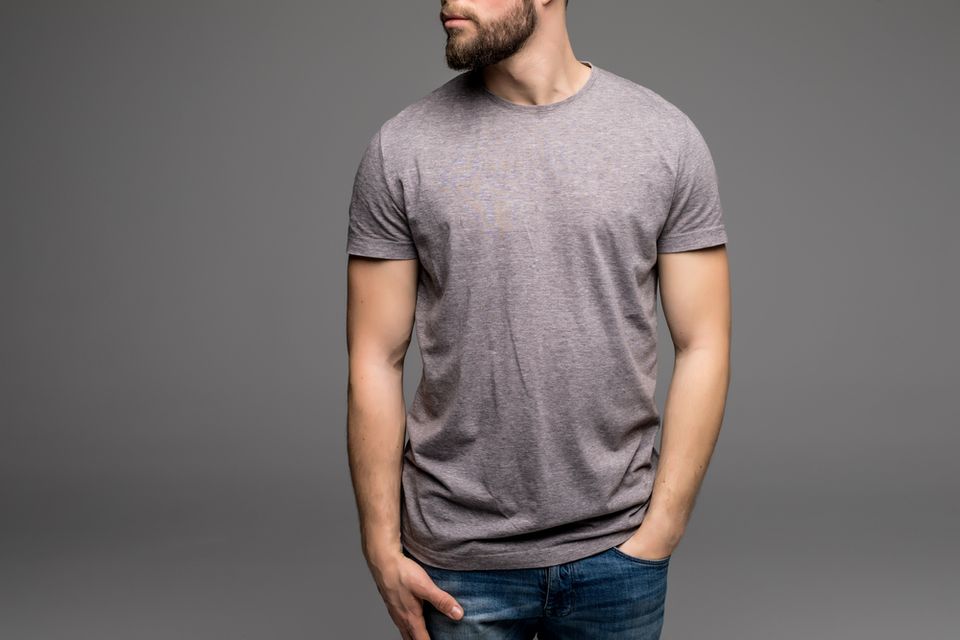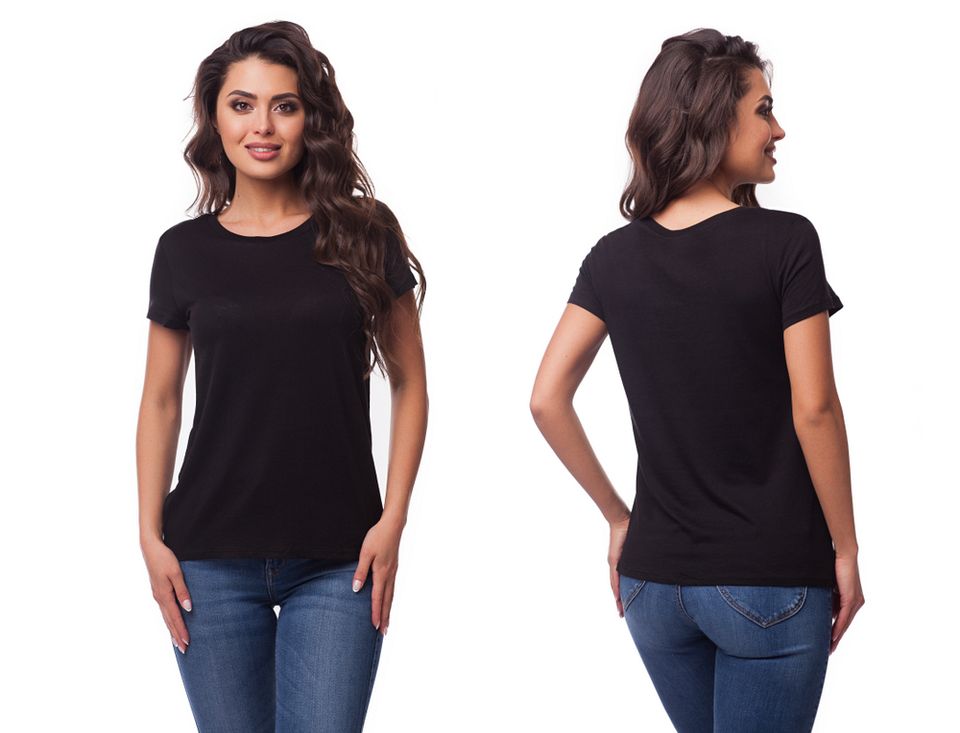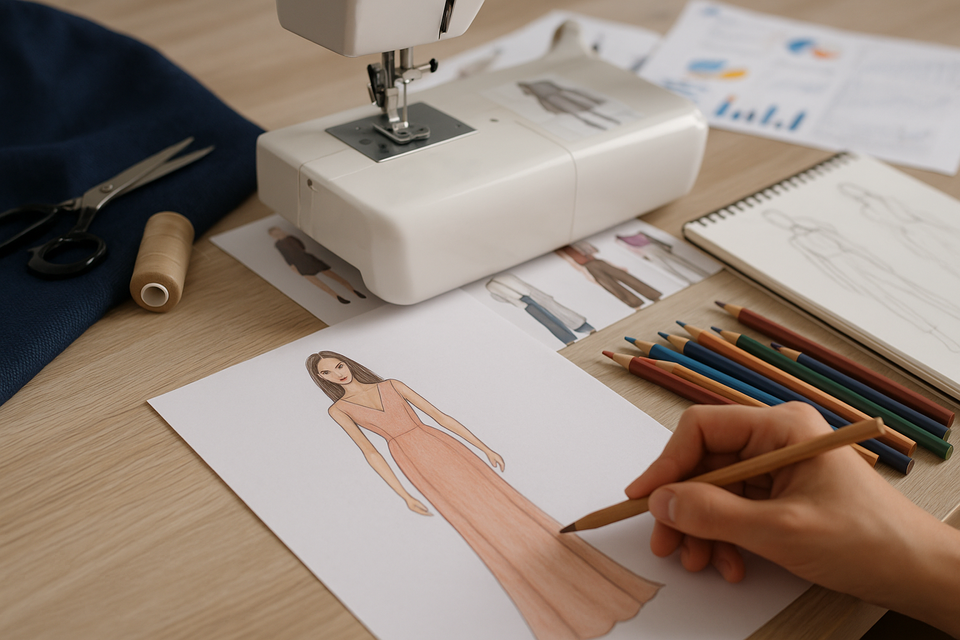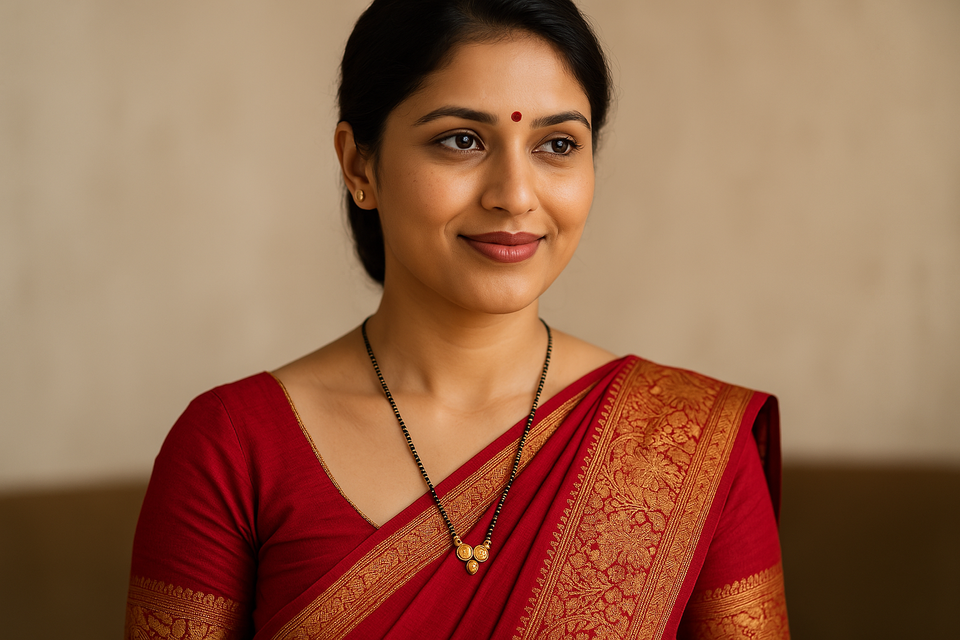Top 5 Indian Traditional Wear For Men
Indian traditional wear for men From the classic Kurta-Pajama to the regal Sherwani, discover the perfect blend of tradition and style."
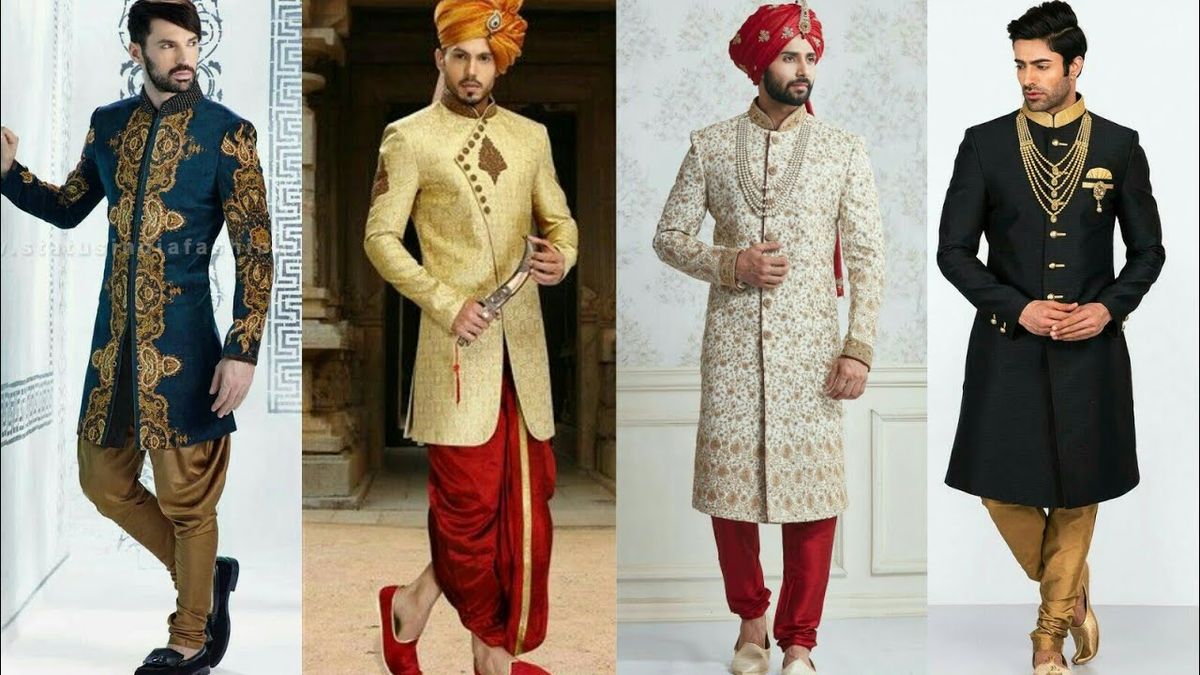
Traditional wear in India varies from religion, region, and geography. The common form of traditional wear in India is Kurta Pajama, Sherwani, etc. As we all know India is a country of festivals. The various festivals showcase various kinds of traditional wear.
And the Benzer world brings you a varied range of Indian traditional wear for men. Again there are variations in this traditional wear depending on region and religion. Kurta-Pijama, Lungi-shirt which is popular in South India especially Tamil Nadu and Gujarati dress which has a typical style of pants and a frock style Kurta.
1. Kurta Pajama
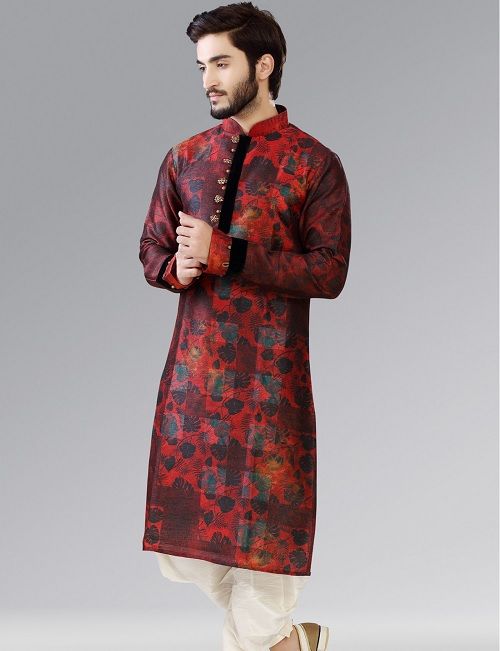
The Kurta Pajama has an essence of Indian traditional men's wear. This traditional wear can be wear on any occasion like Weddings, Festivals, family gatherings, etc. People in India wear Kurta as casual wear also.
Certainly! The kurta-pajama is a traditional Indian outfit for men that is both versatile and comfortable. It is a popular choice for various occasions, ranging from casual events to formal celebrations. Here are more details about the components and characteristics of the kurta-pajama:
Kurta: The kurta is a long, loose-fitting tunic that typically reaches below the knees. It is characterized by its straight cuts and side slits, allowing for ease of movement. The kurta can have various necklines, including round, V-neck, or mandarin collars. The sleeves may be short, long, or three-quarters in length, depending on personal preference and the occasion.
Pajama: The pajama, also known as the pyjama or churidar, is the lower part of the outfit. It consists of straight-cut, loose-fitting trousers that gather at the ankles. Traditional pajamas have a drawstring or elastic waistband for a comfortable fit. Churidar pajamas, which are tighter around the ankles, are also commonly paired with kurtas.
Dupatta: While not always an integral part of the kurta-pajama ensemble, a dupatta (scarf) can be added for a more formal or festive look. The dupatta can be draped over one shoulder or worn casually around the neck, depending on the style and personal preference. It often complements the color and design of the kurta.
Fabrics and Embellishments: Kurtas and pajamas come in a variety of fabrics to suit different seasons and occasions. Cotton is commonly worn for casual and everyday use, while silk, brocade, or other luxurious fabrics are chosen for formal events. Embellishments such as embroidery, mirror work, or sequins can enhance the aesthetic appeal of the outfit, especially for special occasions like weddings.
Occasions: The kurta-pajama is suitable for a wide range of occasions, making it a versatile choice in men's traditional wear. It can be worn casually for family gatherings, festivals, or as everyday attire. Additionally, it is a popular choice for formal events like weddings, engagements, and religious ceremonies. The simplicity and elegance of the outfit make it adaptable to various settings.
Variations: There are variations of the kurta-pajama that cater to different preferences and regional styles. Pathani suits, for example, feature a kurta with a buttoned placket and straight-cut trousers, often worn with a matching or contrasting waistcoat. The style of the kurta and the design of the pajama can vary based on cultural influences and personal choices.
Footwear: The choice of footwear often complements the kurta-pajama ensemble. Traditional Indian footwear such as mojaris, juttis, or kolhapuris are popular choices. These handmade, often leather, shoes feature intricate designs and add a traditional touch to the overall look.
The kurta-pajama is not only a cultural staple but also a comfortable and stylish choice for men across India. Its adaptability to different occasions, fabrics, and embellishments make it a wardrobe essential for those who appreciate the charm of traditional Indian attire.
2. Sherwani
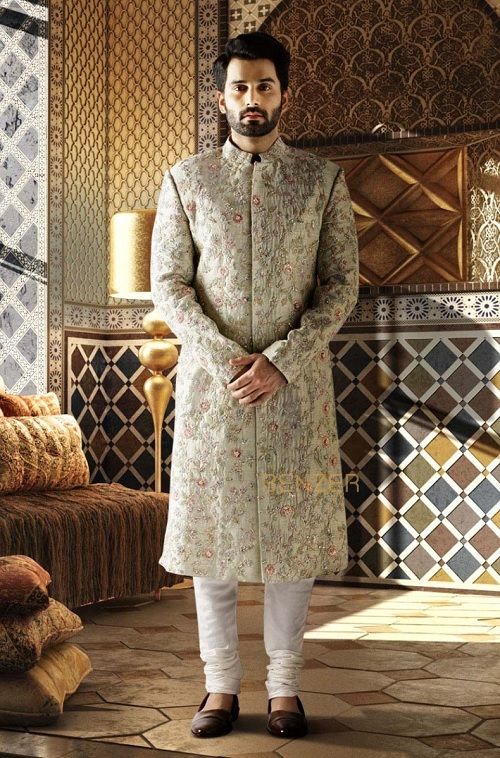
In Indian Traditional wear, sherwani mostly used as wedding attire Sherwani is usually worn by the groom at a wedding. There are different varieties of Sherwani is available on Benzer World.
Certainly! The sherwani is a traditional Indian outfit for men that exudes regality and is often worn on special occasions, particularly weddings, festivals, and formal celebrations. Here are more details about the components and characteristics of the sherwani:
Sherwani: The sherwani is a long, knee-length coat-like garment with a straight cut. It is typically worn over a kurta (long tunic) and churidar (tightly fitting trousers). The sherwani is characterized by its intricate embroidery, embellishments, and rich fabrics, making it a formal and luxurious choice for special events.
Silhouette and Cut: Sherwanis have a tailored and fitted silhouette that flares slightly at the hips. The cut may vary, with some sherwanis featuring straight cuts, while others have an A-line or flared silhouette. The garment is often open at the front, with a buttoned or hook-and-eye closure.
Fabrics: Sherwanis are crafted from a variety of luxurious fabrics, depending on the occasion and personal preference. Common fabric choices include silk, brocade, velvet, and jacquard. These fabrics add a touch of opulence to the outfit, making it suitable for grand celebrations.
Embroidery and Embellishments: One of the distinguishing features of the sherwani is its elaborate embroidery and embellishments. Intricate patterns, motifs, and zari work (metallic thread) are commonly used to adorn the sherwani. Beadwork, sequins, and stones are also applied to enhance the overall aesthetic.
Collar and Neckline: Sherwanis often feature a mandarin collar or a stand-up collar, giving them a distinctive and sophisticated look. The neckline may be embellished with additional embroidery or contrasting fabric for added elegance.
Sleeves: Sherwanis may have full-length sleeves or three-quarter sleeves, depending on the design. The sleeves are often adorned with the same embellishments and embroidery as the rest of the garment.
Dupatta: While not always a standard component, a dupatta (scarf) may be paired with a sherwani for a more traditional and formal look. The dupatta can be draped over one shoulder or worn across both shoulders, adding an extra layer of grace to the ensemble.
Bottom Wear - Churidar or Pajama: The sherwani is typically paired with churidar pants (tightly fitting trousers) or traditional pajamas. The choice between churidar and pajama depends on personal preference and the overall style of the outfit.
Footwear: Traditional Indian footwear such as mojaris, juttis, or embroidered shoes are often worn with sherwanis. These shoes complement the richness of the outfit and contribute to the overall traditional look.
Occasions: Sherwanis are reserved for special occasions and formal events. They are particularly popular as wedding attire for grooms, groomsmen, and family members. Sherwanis may also be worn during festivals, receptions, and cultural celebrations.
Variations: There are various regional and cultural variations of the sherwani, each reflecting local influences and styles. Some sherwanis may be more heavily embellished, while others may have a simpler design. The length, cut, and choice of fabric can also vary.
The sherwani, with its opulent design and intricate craftsmanship, is a symbol of traditional elegance and is considered a classic choice for men's formal wear in India. Its timeless appeal and adaptability to different styles and occasions make it a favorite for those seeking a regal and traditional look.
3. Pathani Suits
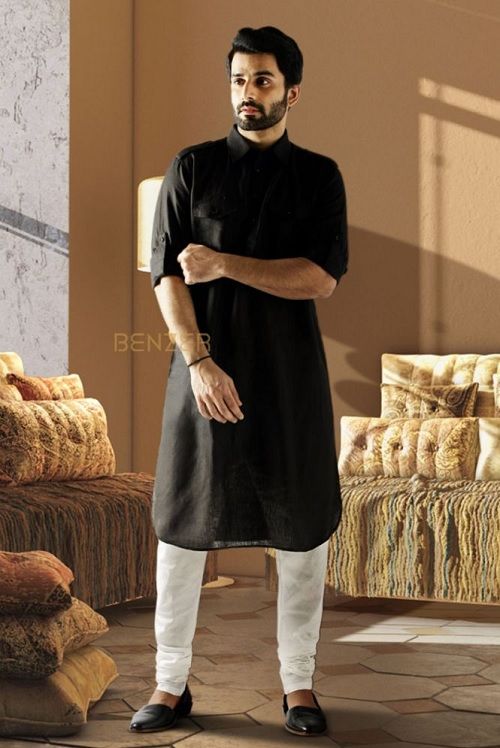
Pathani suits for men are available in various colors and shapes. This traditional Indian clothing for men comes from the afghan region. This traditional wear for men usually worn at a festival or can wear casually.
Certainly! The Pathani suit is a traditional outfit that originated in the Indian subcontinent and is particularly associated with North Indian and Pakistani cultures. It is known for its distinctive style and comfort. Here are more details about the components and characteristics of the Pathani suit:
Kurta: The Pathani suit comprises a long tunic called the kurta. The kurta in a Pathani suit is characterized by its straight-cut silhouette with minimal embellishments. It usually has a simple design, a buttoned placket, and can vary in length, reaching anywhere from the hips to below the knees.
Salwar or Pajama: The lower part of the Pathani suit can either be a straight-cut pajama (tightly fitting trousers) or a salwar (loose-fitting trousers). The choice between salwar and pajama often depends on personal preference, regional styles, and the overall look one wants to achieve.
Dupatta: While a dupatta (scarf) is not an integral part of the Pathani suit, some variations may include a matching or contrasting dupatta for a more formal touch. The dupatta can be draped over one shoulder or worn casually around the neck.
Collar and Neckline: The Pathani suit is known for its distinctive stand-up collar, which is a prominent feature of the kurta. The collar adds a touch of elegance to the outfit and contributes to its unique style. The neckline may have a simple buttoned placket or a more elaborate design.
Fabrics: Pathani suits are crafted from various fabrics, ranging from cotton and linen for casual wear to more luxurious options like silk or brocade for formal occasions. The choice of fabric depends on the season, the formality of the event, and personal preferences.
Sleeves: The sleeves of the Pathani suit can vary from short to full length, allowing wearers to choose a style based on comfort and the occasion. Some variations may feature simple cuffs, while others may have more elaborate designs.
Embellishments: While Pathani suits are generally known for their simplicity, some designs may include subtle embellishments such as embroidery on the collar, placket, or cuffs. The level of embellishment can vary, making it suitable for both casual and semi-formal occasions.
Belt: Some Pathani suits come with an attached or detachable belt that can be tied around the waist. The belt adds a stylish element to the outfit and helps define the waistline.
Footwear: Traditional Indian footwear such as mojaris, juttis, or sandals are commonly worn with Pathani suits. The choice of footwear complements the overall traditional and ethnic look of the outfit.
Occasions: Pathani suits are versatile and can be worn for various occasions. While simpler variations are suitable for casual wear and everyday use, more embellished versions are often chosen for festive events, weddings, and cultural celebrations.
Variations: There are regional and cultural variations of the Pathani suit, each reflecting local influences and styles. Some variations may have additional layers or decorative elements, while others maintain a simpler and more classic look.
The Pathani suit is celebrated for its comfort, simplicity, and versatility. It continues to be a popular choice among men, offering a timeless and traditional option for various occasions.
4. Jodhpuri Suits
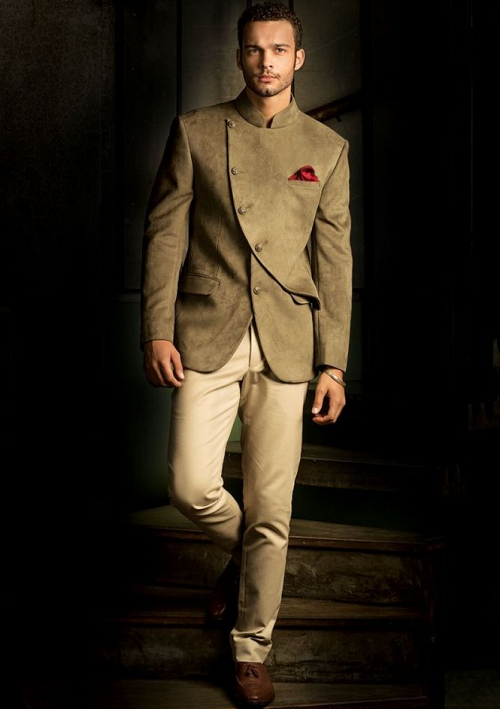
Jodhpuri Suits consider as a royal formal outfit that can be worn at casual parties or on formal parties Jodhpuri suits make men look more elegant and ethnic. There is a variety of ranges available on Benzer World.
Certainly! The Jodhpuri suit, also known as the Jodhpuri bandhgala suit, is a classic and sophisticated Indian outfit that originated in the princely state of Jodhpur in Rajasthan It is known for its distinctive style, combining Western and Indian elements Here are more details about the components and characteristics of the Jodhpuri suit:
Jodhpuri Jacket: The key component of the Jodhpuri suit is the jacket, known as the Jodhpuri or bandhgala jacket This jacket is characterized by its structured, tailored fit and a closed-neck style It typically features a high stand-up collar, which can be rounded or square The jacket is buttoned at the front and often has ornate buttons, adding a touch of elegance.
Kurta or Shirt: The Jodhpuri suit is worn with either a kurta (long tunic) or a formal shirt beneath the jacket The kurta or shirt is typically plain and serves as the inner layer The color of the kurta or shirt may complement or contrast with the color of the Jodhpuri jacket.
Trousers or Breeches: The lower part of the Jodhpuri suit can include either straight-cut trousers or traditional Jodhpuri-style breeches The trousers are often well-fitted and may have a formal crease The breeches, known as Jodhpurs, are characterized by their baggy style around the hips and thighs, narrowing down towards the calves.
Dupatta (Optional): While not a standard component, some variations of the Jodhpuri suit may include a dupatta (scarf) draped over one shoulder The dupatta can be matching or contrasting, adding an extra layer of sophistication to the ensemble.
Fabrics: Jodhpuri suits are crafted from a range of fabrics, including silk, brocade, jacquard, and wool, depending on the season and the formality of the occasion. Silk and brocade are popular choices for festive and formal events, while wool may be preferred for winter wear.
Embroidery and Embellishments: The Jodhpuri jacket is often embellished with intricate embroidery, especially around the collar, placket, and cuffs. The embroidery may include traditional Indian motifs, threadwork, or even metallic embellishments, enhancing the overall grandeur of the outfit.
Pocket Square: Some Jodhpuri jackets feature a pocket square or handkerchief in the chest pocket. This small but stylish addition adds a finishing touch to the outfit.
Footwear: Traditional Indian footwear such as mojaris or juttis are commonly worn with Jodhpuri suits. These handmade, often embroidered, shoes complement the ethnic charm of the outfit.
Occasions: Jodhpuri suits are considered formal and are often worn on special occasions such as weddings, receptions, formal gatherings, and festive celebrations. They are a popular choice for grooms and groomsmen, exuding a sense of elegance and refinement.
Accessories: Accessories like cufflinks, a wristwatch, and a stylish brooch or lapel pin can enhance the overall look of the Jodhpuri suit. These accessories add a personalized touch and contribute to the ensemble's sophistication.
Variations: There are various regional and designer variations of the Jodhpuri suit, with some featuring unique cuts, patterns, and detailing. Modern interpretations may also incorporate contemporary elements while maintaining the traditional essence.
The Jodhpuri suit is celebrated for its blend of Indian and Western aesthetics, making it a timeless and fashionable choice for formal occasions. Its refined appearance and attention to detail contribute to its popularity as a classic ensemble in Indian men's fashion.
5. Indo Western
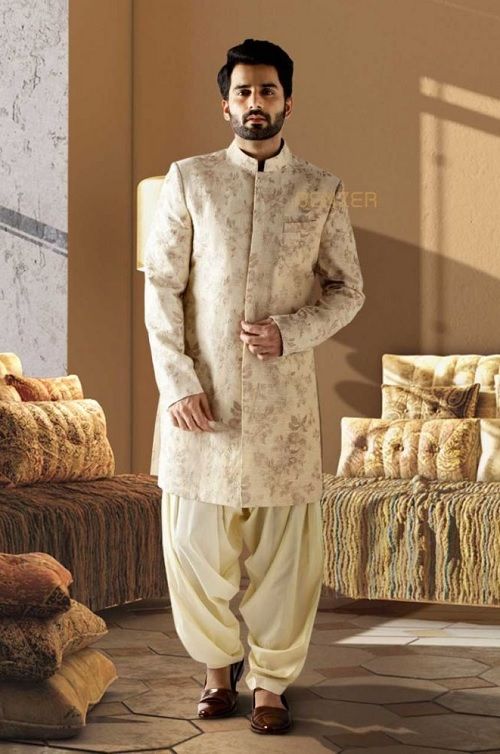
Benzer World brings you the various range of Indo western dresses for the groom. This wear is a combination of Indian and western culture traditional wear. It can be worn either with trousers or kurta pajama.
Certainly Indo-Western outfits represent a fusion of Indian and Western styles, creating a contemporary and versatile fashion statement. These outfits seamlessly blend elements from traditional Indian attire with modern Western silhouettes, resulting in a unique and stylish ensemble. Here are more details about the components and characteristics of Indo-Western outfits:
Kurta or Sherwani Top: The top component of Indo-Western outfits often features a kurta or sherwani-style silhouette. This may include a shorter kurta or a sherwani-style jacket with Western-inspired cuts. The length and design can vary, offering a mix of traditional Indian and contemporary styles.
Western Bottoms: Instead of traditional Indian bottoms like churidar or dhoti, Indo-Western outfits are paired with Western-style bottoms. This can include trousers, straight-cut pants, or even denim jeans, providing a modern and casual touch to the ensemble.
Jackets and Blazers: Many Indo-Western outfits incorporate Western-style jackets or blazers with Indian embroidery, embellishments, or fabrics. These jackets can be paired with a variety of bottoms, adding a refined and contemporary look to the overall outfit.
Vests: Indo-Western vests are another popular element, often worn over a shirt or kurta. These vests can be intricately embroidered or feature contemporary patterns, providing a stylish and versatile layering option.
Kurti with Jeans or Leggings: For women's Indo-Western outfits, kurtis (short or long tunics) are often paired with Western-style bottoms like jeans or leggings. This combination offers comfort and modernity while retaining traditional Indian elements in the upper garment.
Dresses and Gowns: Some Indo-Western outfits for women may feature dresses or gowns with Indian-inspired embellishments, prints, or fabrics. These dresses often blend Western silhouettes with Indian craftsmanship, creating elegant and fashionable ensembles.
Fabrics and Prints: Indo-Western outfits may utilize a range of fabrics, including silk, brocade, chiffon, and georgette, often with traditional Indian prints or embroidery. The choice of fabric contributes to the overall fusion of styles.
Accessories: Indo-Western ensembles are often accessorized with a mix of traditional and contemporary accessories. This can include statement jewelry, such as jhumkas (traditional Indian earrings) paired with Western-style bracelets or watches. Scarves and stoles with traditional Indian embroidery can also be added to enhance the look.
Footwear: Footwear choices for Indo-Western outfits can vary. Men may opt for traditional Indian footwear like mojaris or juttis, while women may choose heels, sandals, or modern flats, depending on the occasion and outfit style.
Occasions: Indo-Western outfits are suitable for a wide range of occasions, from casual events to formal gatherings and festive celebrations. They are a popular choice for weddings, parties, and cultural events, offering a contemporary yet culturally rooted fashion statement.
Bridal Wear: Indo-Western bridal wear has gained popularity, especially for brides who want to blend traditional and modern elements in their wedding attire. Bridal gowns with Indian embroidery, lehenga-style skirts paired with Western tops, and other innovative combinations are embraced by modern brides.
Groom's Wear: Grooms often opt for Indo-Western outfits for a contemporary and stylish look during wedding ceremonies. Sherwani-style jackets with Western bottoms or kurta sets with modern cuts are common choices.
Indo-Western fashion allows individuals to express their unique style by combining the best of both worlds. Whether it's a fusion of Indian and Western silhouettes, fabrics, or accessories, Indo-Western outfits provide a dynamic and fashion-forward approach to traditional attire.

